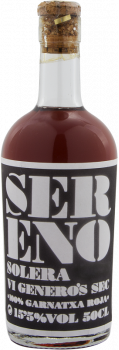Showing 1 to 16 of 67 (5 Pages)
Buy Wine with Garnacha Gris
Garnacha Gris has relatively early budding but has late ripening so it has to be grown in very warm climates. It is vigorous (less in case it is planted in sandy soils), subject to suffer downy mildew, excoriosis, botrytis cinerea, ring rot or bacterial blight, grapevine moth and millerandage. Its berries have a very high sugar level so it loses colour if the performance is too high. Acidity levels tend to be moderate. Garnacha Gris is well adapted to slightly acid gravel soils rich in limestone. Short and gobelet pruning is recommended. It has good endurance to drought but it might lack of magnesium. On the other hand, Garnacha Gris has good resistance to grapevine wood diseases as Stereum hirsutum (Esca) and Eutypa lata (Dead arm), which explains in great part the unusual vine longevity.
In France Garnacha Gris is commonly grown at the Languedoc-Roussillon, where it is blended with Garnacha Blanca, Pinot Gris and Macabeo.
In Spain, Garnacha Gris main production areas are Navarra and Castilla La Mancha, where it is also blended with Garnacha Blanca, as for instance Espelt winery (Empordà) and Acústic (Montsant). It is also used to produce “rancio” wines at appellation Empordà.
Buy Wine with Garnacha Gris
Garnacha Gris has relatively early budding but has late ripening so it has to be grown in very warm climates. It is vigorous (less in case it is planted in sandy soils), subject to suffer downy mildew, excoriosis, botrytis cinerea, ring rot or bacterial blight, grapevine moth and millerandage. Its berries have a very high sugar level so it loses colour if the performance is too high. Acidity levels tend to be moderate. Garnacha Gris is well adapted to slightly acid gravel soils rich in limestone. Short and gobelet pruning is recommended. It has good endurance to drought but it might lack of magnesium. On the other hand, Garnacha Gris has good resistance to grapevine wood diseases as Stereum hirsutum (Esca) and Eutypa lata (Dead arm), which explains in great part the unusual vine longevity.
In France Garnacha Gris is commonly grown at the Languedoc-Roussillon, where it is blended with Garnacha Blanca, Pinot Gris and Macabeo.
In Spain, Garnacha Gris main production areas are Navarra and Castilla La Mancha, where it is also blended with Garnacha Blanca, as for instance Espelt winery (Empordà) and Acústic (Montsant). It is also used to produce “rancio” wines at appellation Empordà.





